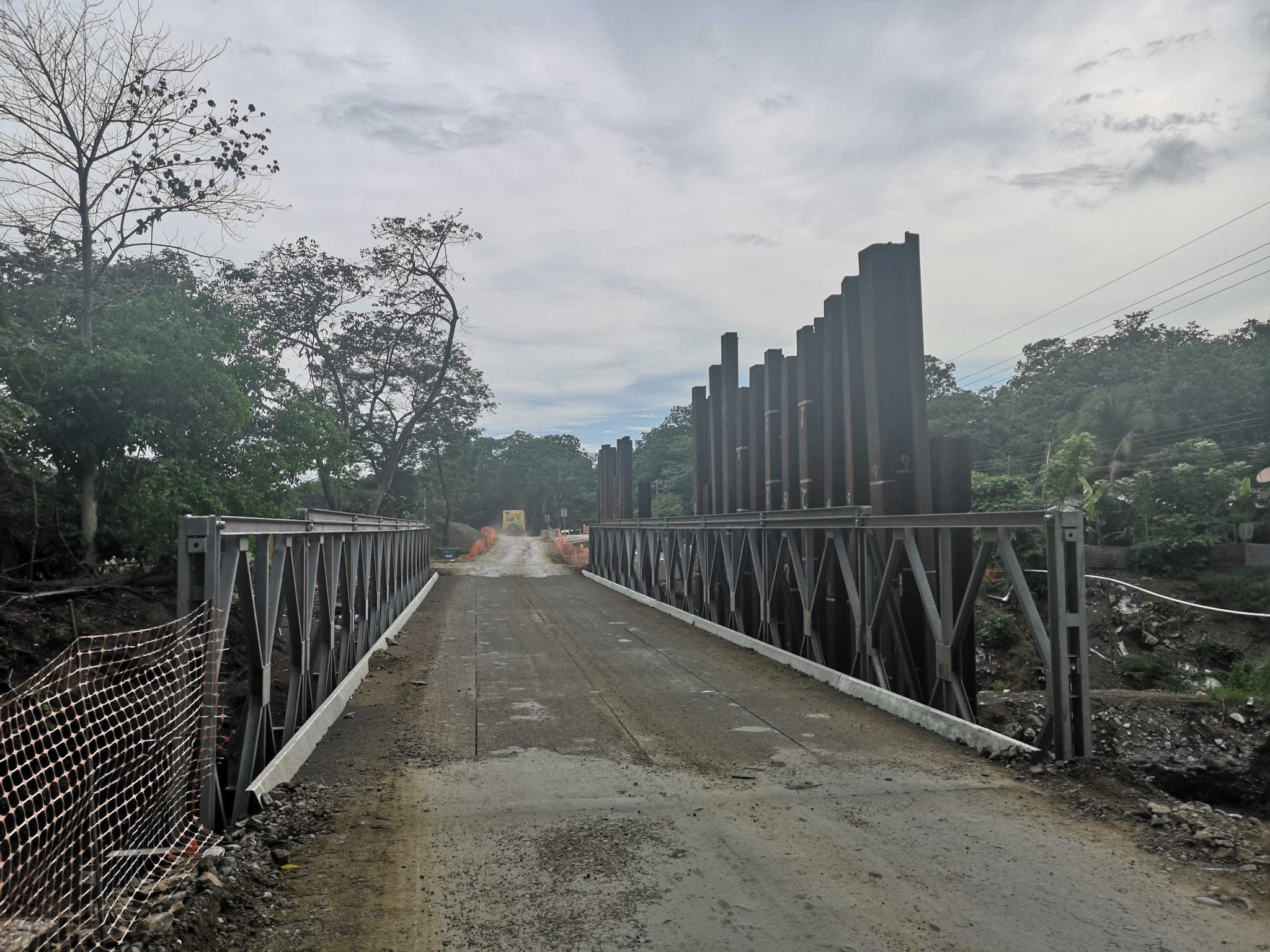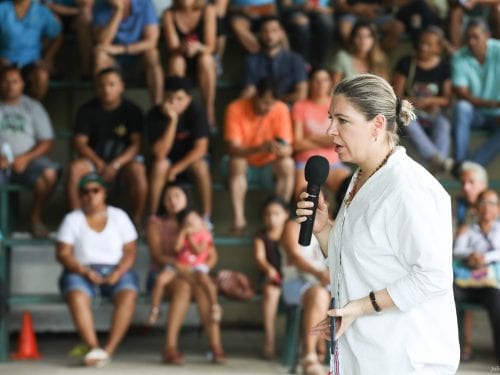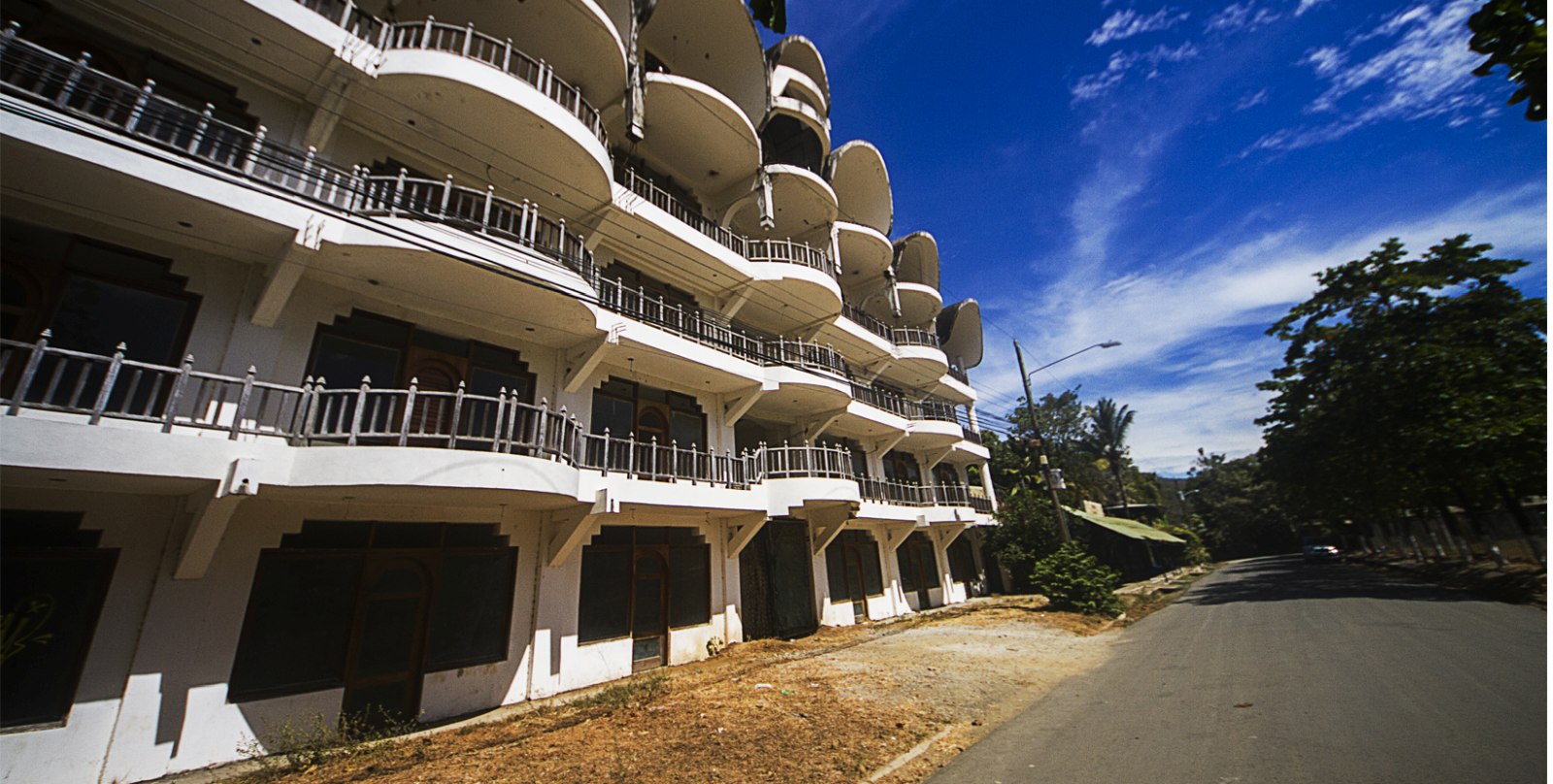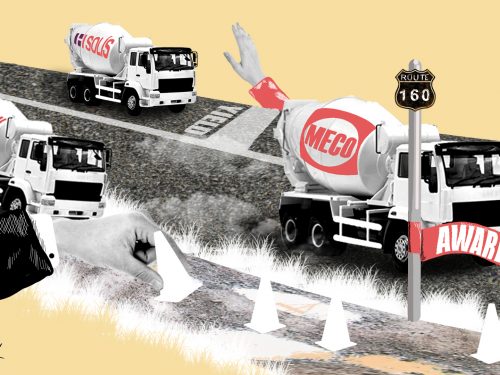
The construction of Nosara’s road bridges over the Rempujo, Sube y Baja and La Esperanza creeks will remain on hold as the Ministry of Public Works and Transport (MOPT) and the National Road Council (Conavi) did not budget enough materials for the project.
According to Conavi’s Roads and Bridges Construction Management, the construction lacks a large amount of concrete, steel, granular material, asphalt materials, among others. The errors come from the initial design of the bridges made last year.
The design of the bridges was done with manuals and relevant soil studies that showed a design scenario different from reality,” admitted that Conavi office to The Voice of Guanacaste by email.
Now the institutions must look for a budget increase approval from the General Comptroller of the Republic (CGR). The amount is still unknown but, whatever it is, it will be added to the initial ¢1.291 million. The bridges were included in the announcement made by the first lady Claudia Dobles in November 2019.
At that time, Dobles and Public Works and Transport Minister Rodolfo Méndez Mata promised that “the first 10 kilometers of road between Garza and Nosara would be completed in five months”. Méndez said they would deliver three double-track bridges along with that work.
Now, Conavi states that the bridges will probably be ready until 2021.
Since April, the Infrastructure Construction Company (Codocsa in Spanish), in charge of the building, suspended the work on the bridges by order of Conavi, but after that, they placed two bailey bridges in order to avoid paralyzing vehicle transportation during the rainy season.
There were already bridges over the creeks before this last intervention, but the Minister of Public Works and Transport said during his visit to Nosara that the infrastructure was already extremely old and detracted from tourism opportunities and economic reactivation in the area.
Route 160 is cut by those creeks at Garza, La Esperanza and Nosara downtown.
Neighbors are still hopeful because they have seen more progress on the route than ever before. The president of the Development Association (ADI) of La Esperanza, Silvia Carrillo, says that although for now they “trust the word” of the institutions, they fear that the construction of the bridges will be permanently paralyzed.
“We are afraid of having to wait another 20 years, because we are not a priority,” she says.
Marco Ávila, president of the Nosara Integral Development Association (ADIN in Spanish), agrees that the route “has never been better,” and says that his organization is continually calling Conavi’s offices to keep track of decisions made about the bridges.
“We understand that there is a pandemic, but we will still insist,” he said. “We would close an important chapter in Nosara.”
Carrillo says circulation on the temporary bridges is working well. However, the 20 meters before reaching the structures are full of holes and mud, making it very difficult to transit, especially for small vehicles.
According to the engineer in charge of Route 160, Alonso Mora, those meters of road also belong to the construction of the bridges, so they will not be touched until Conavi retakes operations.
It is not a competence of the route managers, because it is land qualified as part of the bridges. We can’t do anything, they are different projects,” said Mora.
Route 160 partially finished
At the end of May, MOPT completed the surface treatment of the first 10 kilometres between Garza and Nosara, as promised by Dobles in November.
Currently, the Executive Directorate of Conavi is promoting a bidding process to place, during the second quarter of the year, the missing asphalt layer in those kilometers. The Comptroller’s Office has not yet approved the budget.
Mora emphasizes that this asphaltic layer would be used to “improve” the work done in the last six months, but not to repair them.
“That would be the last thing to definitively finish those 10 kilometers once and for all,” said the engineer in charge of the works.
The Ministry of Public Works does not discard the possibility of continuing with the second and third stages of Route 160 in the near future, but neither do they have any specific plans about it.







Comments